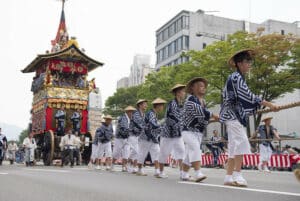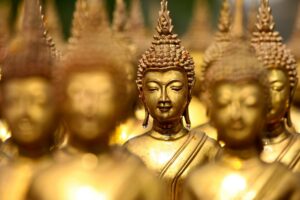
Celebrate Mid-Autumn Festival Under the Harvest Moon in These Countries
IQ
- 2 Min Read
In order to offer transparency into how our stories are produced and to teach our readers about the importance of media literacy online, the editorial team provides a quick self-rating of the integrity of the articles and the facts presented against the following IQ metrics.
- Published on September 9, 2022
- Last Updated March 10, 2023
- In Events
Mid-Autumn Festivals are celebrations of the moon and bountiful harvest. Discover each country’s unique variation of this long-standing traditional holiday.
Visiting a country during one of its festive holiday periods is a great way to get a fuller experience of the culture, meet locals who are relieved from work and present at celebratory events and gain perspective on what different cosmologies may have to offer your particular interpretation of reality. Stemming from Chinese traditions, in many Asian countries, the 15th day of the eighth lunar month is celebrated as a moon and harvest related festival, where families gather to eat, offer remembrances and reflections to their ancestors, and celebrate another year of bountiful harvest even as the agricultural origins of the concept have given way to more modern ones. The various traditions used to celebrate this occasion reflect a wide diversity of practices, but this guide can help you choose the ideal destination for your lunarary visit.
Japan
In Japan, this holiday is called the Otsukimi Festival. Families gather to eat Tsukimi Dango, a white, spherical rice cake, along with fresh fruit and taro. These foods, along with wine, are left out as offerings while celebrants take time to observe the glowing surface of the moon. In more traditional times, silvery white grass known as pampas, seen as a token for the God of the Moon, who is responsible for the crop, was hung over doorways and decorated facade. While younger Japanese people are less attached to this tradition, it can still be observed in many parts of the country.
South Korea
Known in South Korea as Chuseok, or Thanksgiving Day, this holiday is accompanied by a three-day respite from work, the consumption of traditional foods like songpyeon rice cakes, taro soup, rice wine, and Hnagwa cakes. Families also take the opportunity to gift each other health related nutritional products like high end cooking oils and kitchen tools, and visit the graves of their ancestors to clean them and make offerings.
Thailand
Whereas many moon festival celebrations are centered around the moon goddess, Chang’e, and her pet rabbit, in Thailand, the story goes that eight immortal beings visited a palace on the moon to offer cakes shaped like peaches and birthday greetings to Guanyin, the goddess of mercy. Locals will gather to mark the holiday by dining on pomelos, exchanging gifts and hosting get-togethers. This custom has become a favorite of foreign tourists as well, who eagerly attend full-moon parties thrown around the time.
Philippines
In the Philippines, celebrations of this festival center around communities where ethnically descended Filipino Chinese people are more populous. There are abundantly decorated shops and public spaces, a wide variety of mooncakes available and street festivals that incorporate a range of customs.
This story was created by Detour, a journalism brand focused on the best stories in Black travel, in partnership with McClatchy’s The Charlotte Observer and Miami Herald. Detour’s approach to travel and storytelling seeks to tell previously under-reported or ignored narratives by shifting away from the customary routes framed in Eurocentrism. The detour team is made up of an A-list of award-winning journalists, writers, historians, photographers, illustrators and filmmakers.












